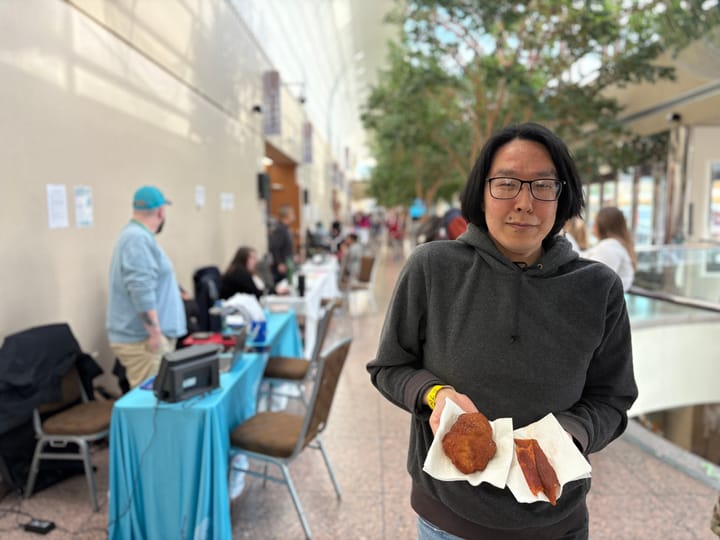'We’re in God’s hands now': A dispatch from Western Alaska
Hundreds have left their homes. Many may never go back.
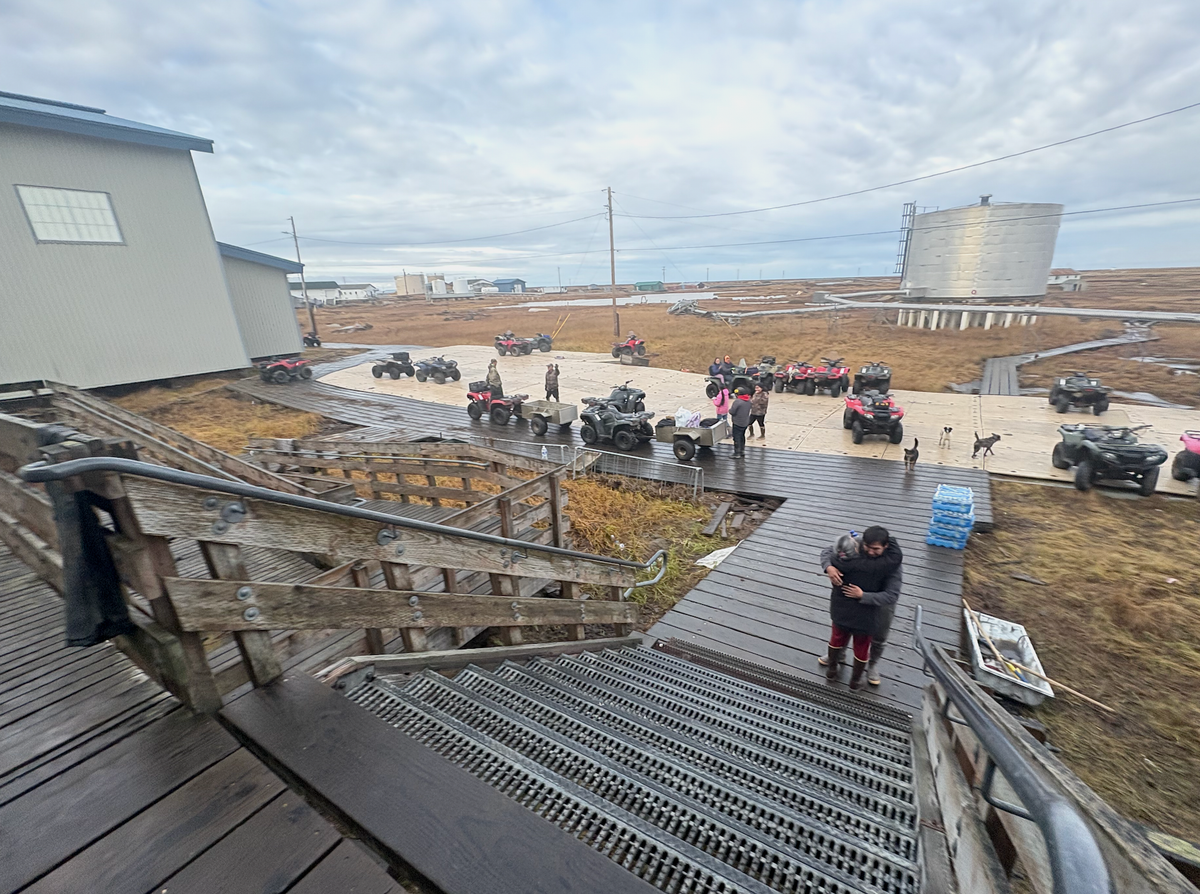
This story is a collaboration with KYUK. The Western Alaska public media station is facing dire budget constraints with the rescission of federal funding; support them here.
BETHEL — Darrell John lived in his home in the Western Alaska village of Kipnuk for 20 years before rising floodwaters from the remnant of a typhoon forced him and his family to flee to a shelter late at night last weekend.
His home floated off its foundation, finally coming to rest three miles away from the village. His boat, his snowmachines, the freezer full of subsistence foods that rural Alaska families depend on to get through winter — all were lost.
“Everything is gone,” John said.
During the storm, other families were stuck in terror inside their homes as they floated away, though miraculously, no one from Kipnuk died.
A few days later, John and his family were airlifted out of Kipnuk along with nearly 500 others, many of whom carried little more than a backpack. The village — a remote community hundreds of miles from the road system, and where many people still live off the land — is now contaminated with spilled fuel, residents said, and the vast majority of buildings are wrecked.
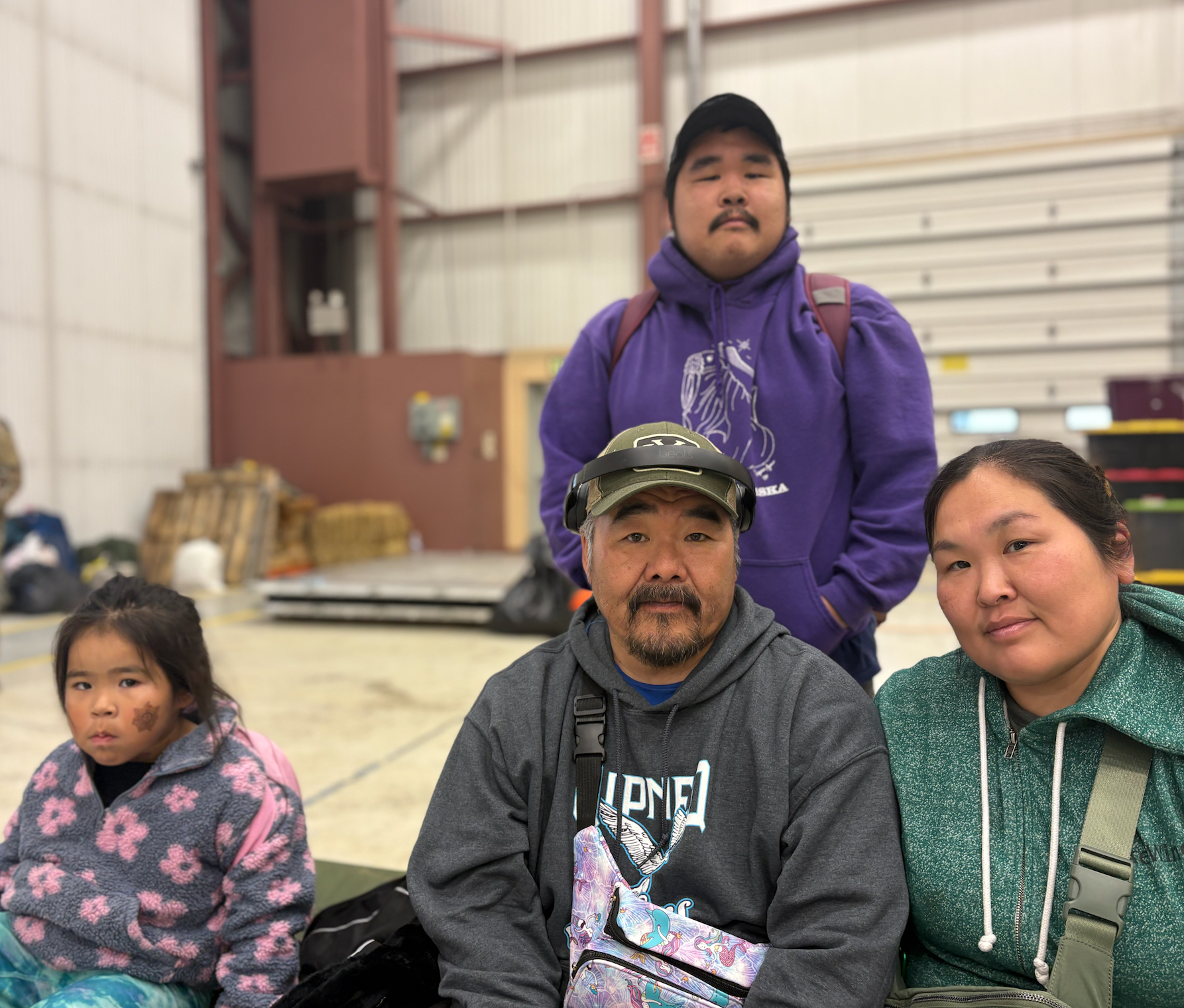
John, 50, his partner and his two children may never return to Kipnuk. They were expecting to fly on a military C-17 cargo plane to the Anchorage area, where they may stay with relatives, though only temporarily, he said. Hundreds of people from Kipnuk and other Western Alaska villages face a similar predicament.
“We don’t know where we’re going, or where we’re going to live. Or if we’ll ever go back home,” said John, sitting on a cot in a National Guard hangar Wednesday in the regional hub town of Bethel, as Blackhawk helicopters shepherding evacuees flew overhead.
He added: “We’re all in God’s hands. We’re not in control any more.”
The broad strokes of the devastation brought by the storm to Western Alaska were not hard to discern in its immediate aftermath: widespread flooding, homes and belongings lost and destroyed, one person from the village of Kwigillingok found dead and two more still missing.
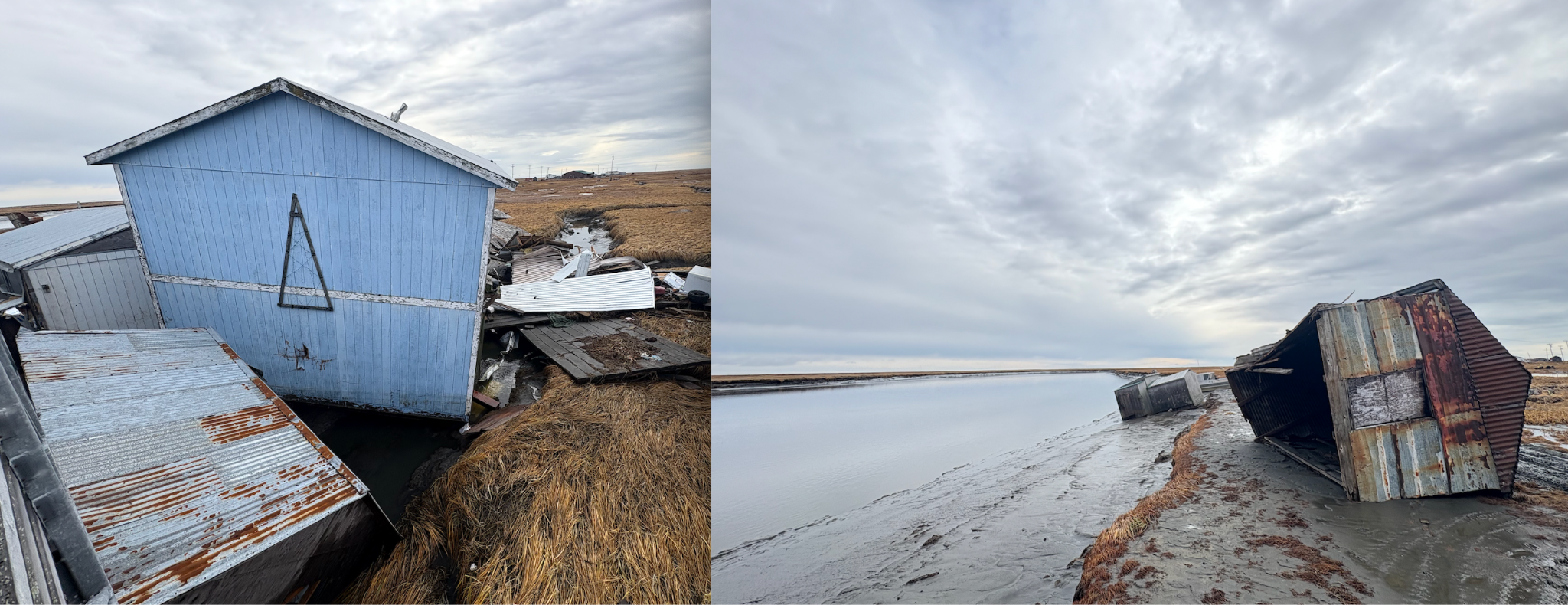
Nearly a week later, the full emotional, physical and financial implications are finally starting to come into focus — trickling out through social media, government news conferences and accounts from rescuers and survivors.
In sum: an immense disaster, one that’s wrought deep trauma on Western Alaska’s Indigenous residents and that’s raising existential questions about the future of their low-lying communities amid a changing climate and a tightening state budget.
The region sits on a broad, dead-flat plain next to the Bering Sea, and weather experts say they expect warming ocean temperatures to fuel more storms like the typhoon — which came just three years after another fall storm caused widespread damage.
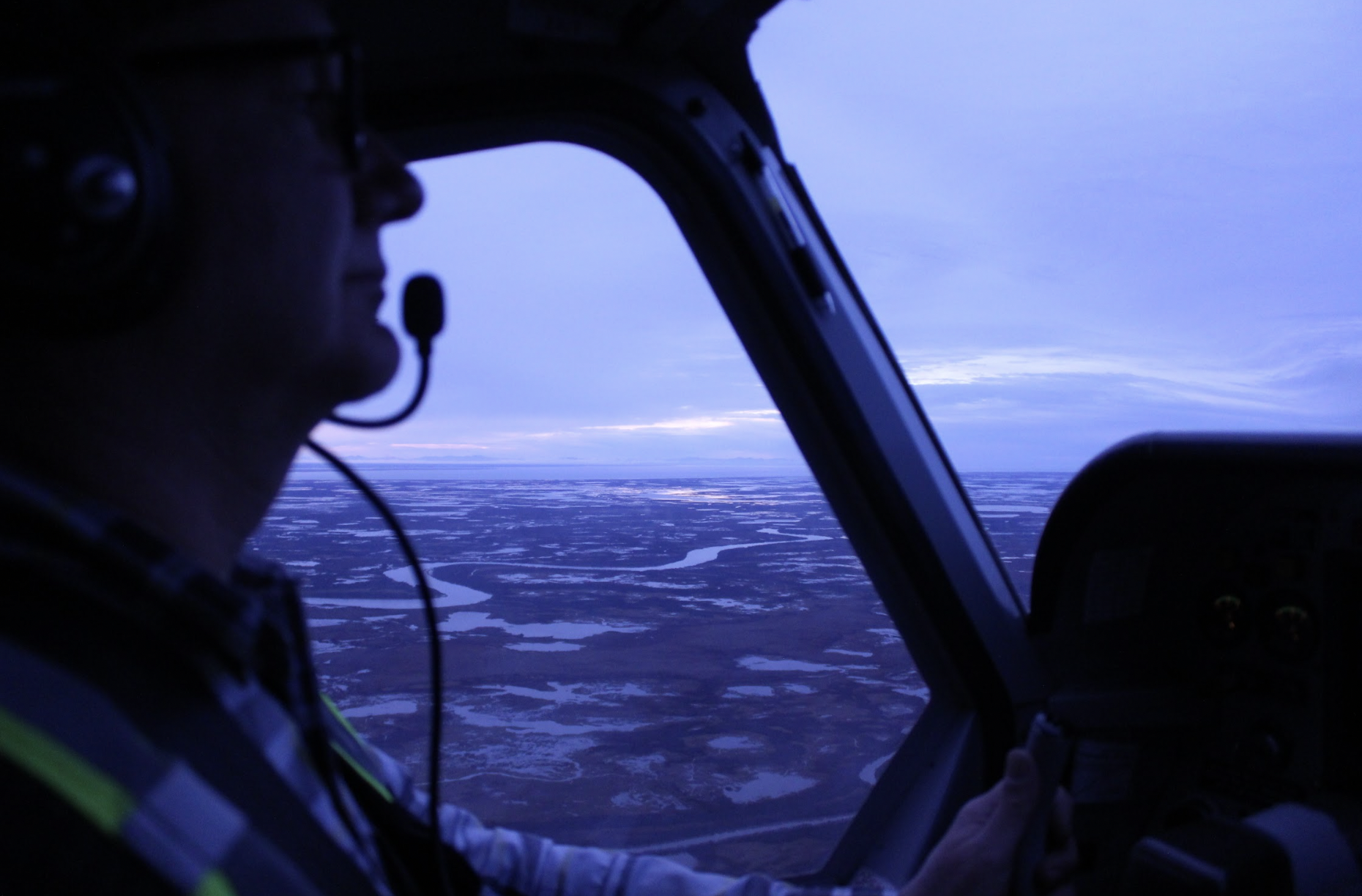
Bryce Edgmon, Alaska’s House speaker, said he spent nearly two hours at an Anchorage shelter talking with evacuees this week, and many told him they “do not want to go back to their villages and experience that kind of terror again, ever.”
“They will willingly be uprooted, move upriver however many miles it is to get to higher ground, wherever,” Edgmon said.
“Everybody I talk to is trying to put this into some kind of a window so they can rationalize in their brain: 'What the hell happened, and what are we going to do about it?'” he added. “This is a whole new world we’re living in.”
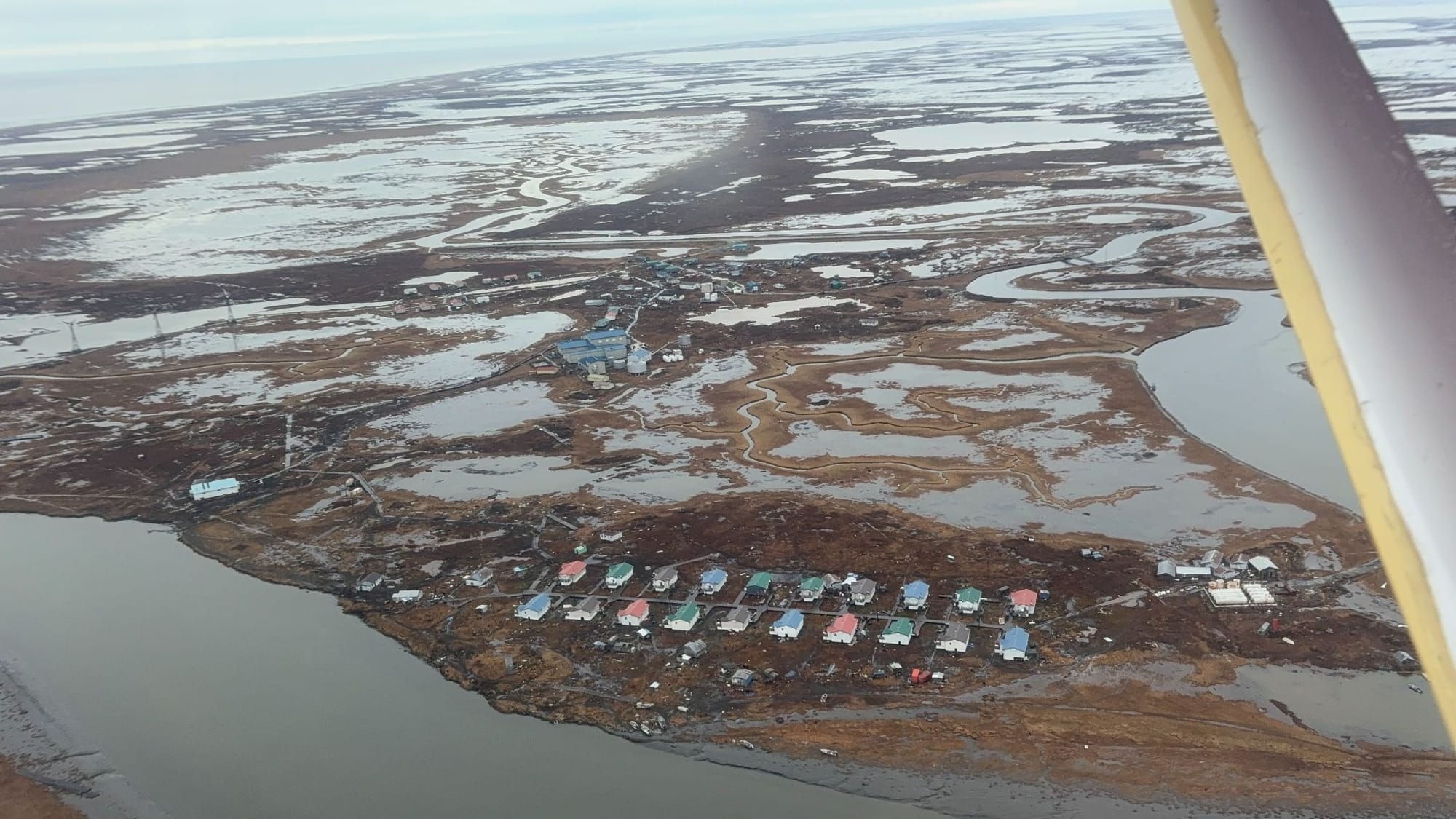
I was on a personal trip to the Western Alaska hub town of Bethel when the remnants of Typhoon Halong blew through the region last weekend.
While the storm caused minor flooding here in Bethel, it was the region’s outlying villages closer to the coast that suffered the harshest impacts. Since Sunday morning, I’ve been slowly piecing together a sense of the devastation that’s been wrought. It’s taken a few days, as first rescuers, then survivors began arriving back in Bethel; then, on Thursday, I took a commercial flight to the hard-hit village of Kwigillingok.
I wanted to see for myself what had happened, and to witness the evacuation of dozens of people by bush plane and military helicopter. I watched and listened to deeply emotional scenes — adults weeping and hugging as they recounted the disaster, and children clinging to their parents and plugging their ears as they prepared to board a huge military helicopter.
One conversation stuck out — an informal chat I had on the front steps of the school that was serving as the village’s shelter. A middle-aged woman had been calmly telling me about the storm and its impacts until I asked whether she plans to come back to Kwigillingok, after evacuating.
She immediately began sobbing, wailing the word: “Noooooo.”
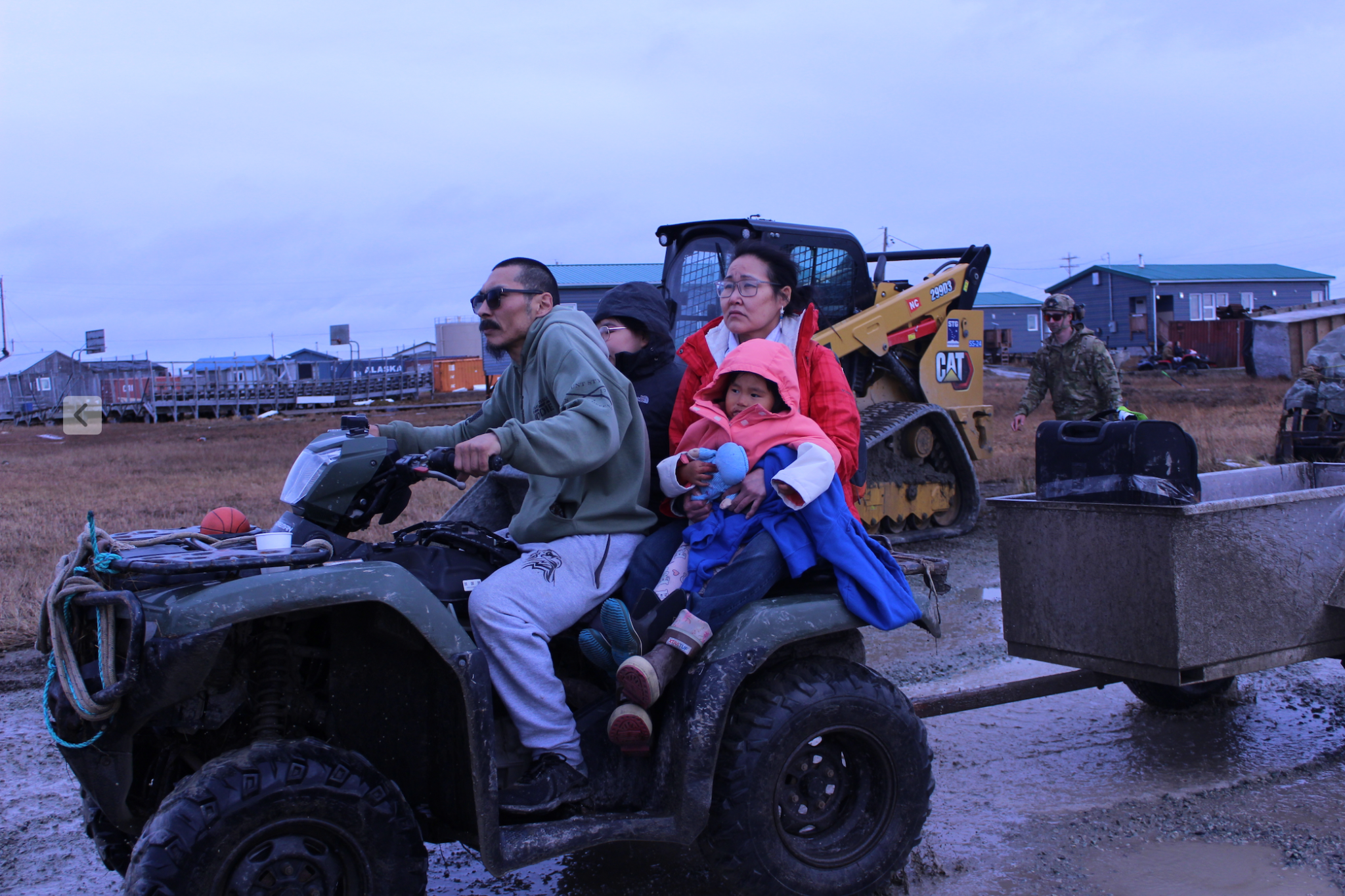
My visit to Kwig, as it’s known, revealed no immediate consensus about what comes next for that village, or others. One community leader told me that people could return in the spring; others said they plan to move permanently to different villages nearby.
There’s also talk of moving the whole village to a new site on higher ground. For Ephraim Andrew, 38, leaving the area would sever his generations-long tradition of living off the land, which he’s passing on to his own children. The idea of leaving for Bethel or Anchorage doesn’t work for him: “There’s not a lot of hunting over there,” he said.
“My two younger boys, they love to hunt their subsistence,” Andrew said. “Birds, seal, moose, walrus, fishing. Like, everything.”
Despite their long history in the remote region, the people who live in the Yukon-Kuskokwim Delta are no strangers to the cash economy and modern day technology and conveniences: They drive snowmachines, four-wheelers and boats with outdoor motors, and they tap into satellite internet through Starlink terminals.
But they also still live directly off the land in a way that few people outside Alaska can relate to.
In Kwigillingok on Thursday, 37-year-old Johnny Andrew sorted through bags of subsistence foods that represented weeks of work to harvest and preserve. There were chunks of musk ox, beluga whale and ringed seal and jars of seal oil; a whole, plucked goose was sealed into a Ziploc.
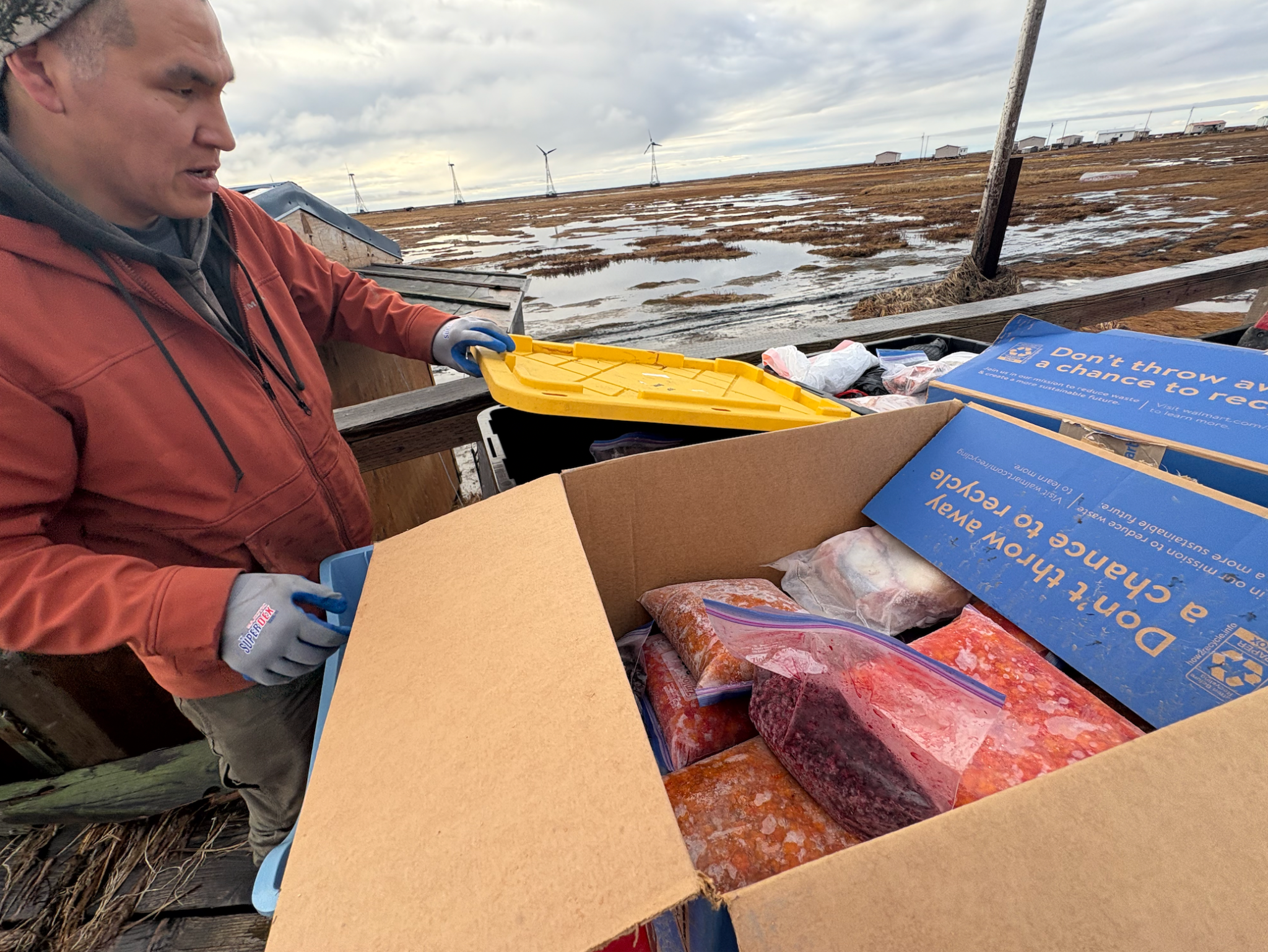
The typhoon represented a deep disruption. Floodwaters floated Andrew’s shed and its three chest freezers 200 yards from his home, leaving the freezers without power and threatening to ruin all the food inside.
Andrew had already donated thawing moose to the school before lugging some 500 pounds of still-frozen meat, fish and berries across boggy tundra and up to a boardwalk where he’d parked a four-wheeler and trailer. He planned to haul it to a waiting bush plane that would carry it out of the village to a place it could be reliably kept cold for the foreseeable future.
“I feel kind of guilty,” he told me: Not everyone else would be able to save their harvests the same way.
Others in Kwigillingok said they’d lost the tools they use to gather their subsistence harvests. Swamped snowmachines, four-wheelers and outboard motors littered the tundra around the village, along with debris like car batteries, storage tanks, tires and totes. Overturned boats had floated away from town and could be seen from the air several miles away.
(View a short video of the damage)
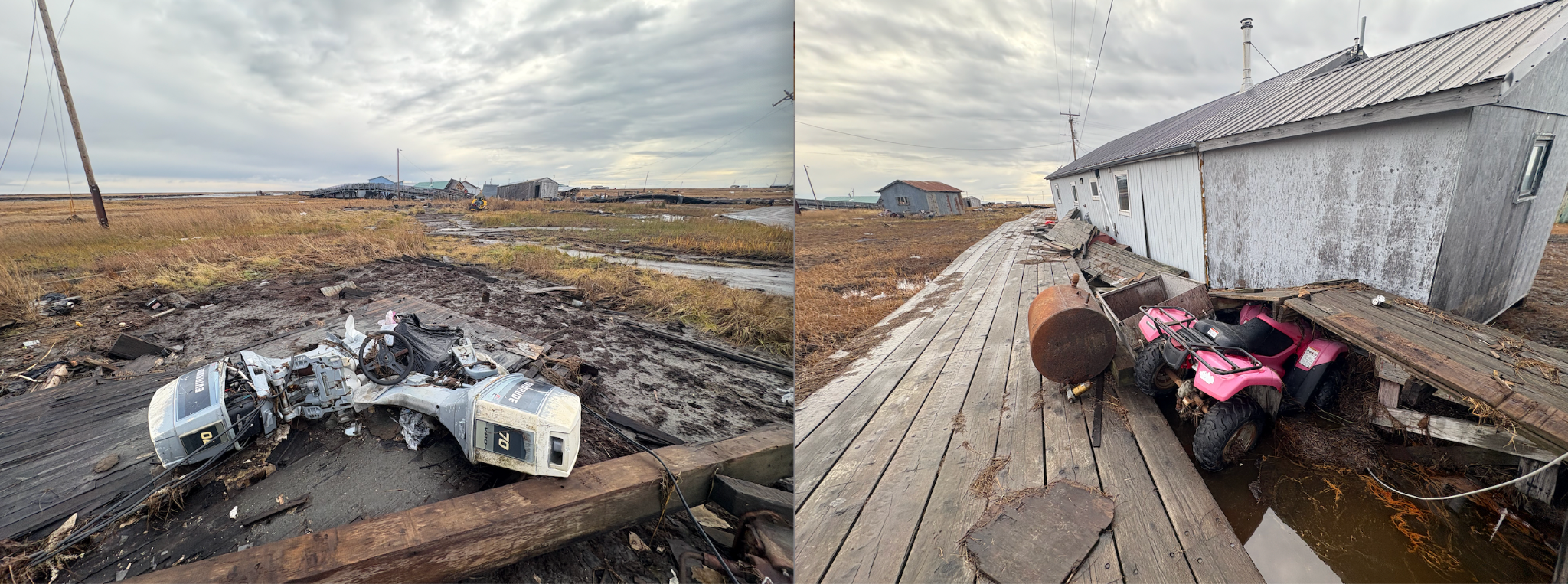
Then, there was the widespread damage the storm visited on Kwig’s infrastructure.
The school and the neighborhood around it had survived relatively unscathed. But in the “downtown” area of the village closer to the Bering Sea, wreckage was everywhere.
Just getting there required me to clamber across deep mud and waterlogged tundra as I traversed twisted and deconstructed stretches of the wooden boardwalk that residents normally use to get around. Shipping containers appeared to have floated across the community and were pushed up against the boardwalk, which had also collected logs and lengths of fishing net.
(View a short video of traversing the boardwalk)
Sheds and other structures were overturned. Flooded homes sat off their foundations, including one that came to rest over a slowly trickling creek. Other homes had floated all the way across the Kwigillingok River or far upstream, where they sat like huge Lego bricks on the horizon.
It was hard to grasp the full scale of the devastation from my spot on the tundra. But community leaders did the job pretty well on a whiteboard at the school. They’d written a heading: “Homes that Floated Away.” Forty-five names sat beneath it.
U.S. Census data indicates that the village has 103 households. Alaska Gov. Mike Dunleavy, in a request for a presidential disaster declaration, said 35% of Kwig’s structures have been destroyed.
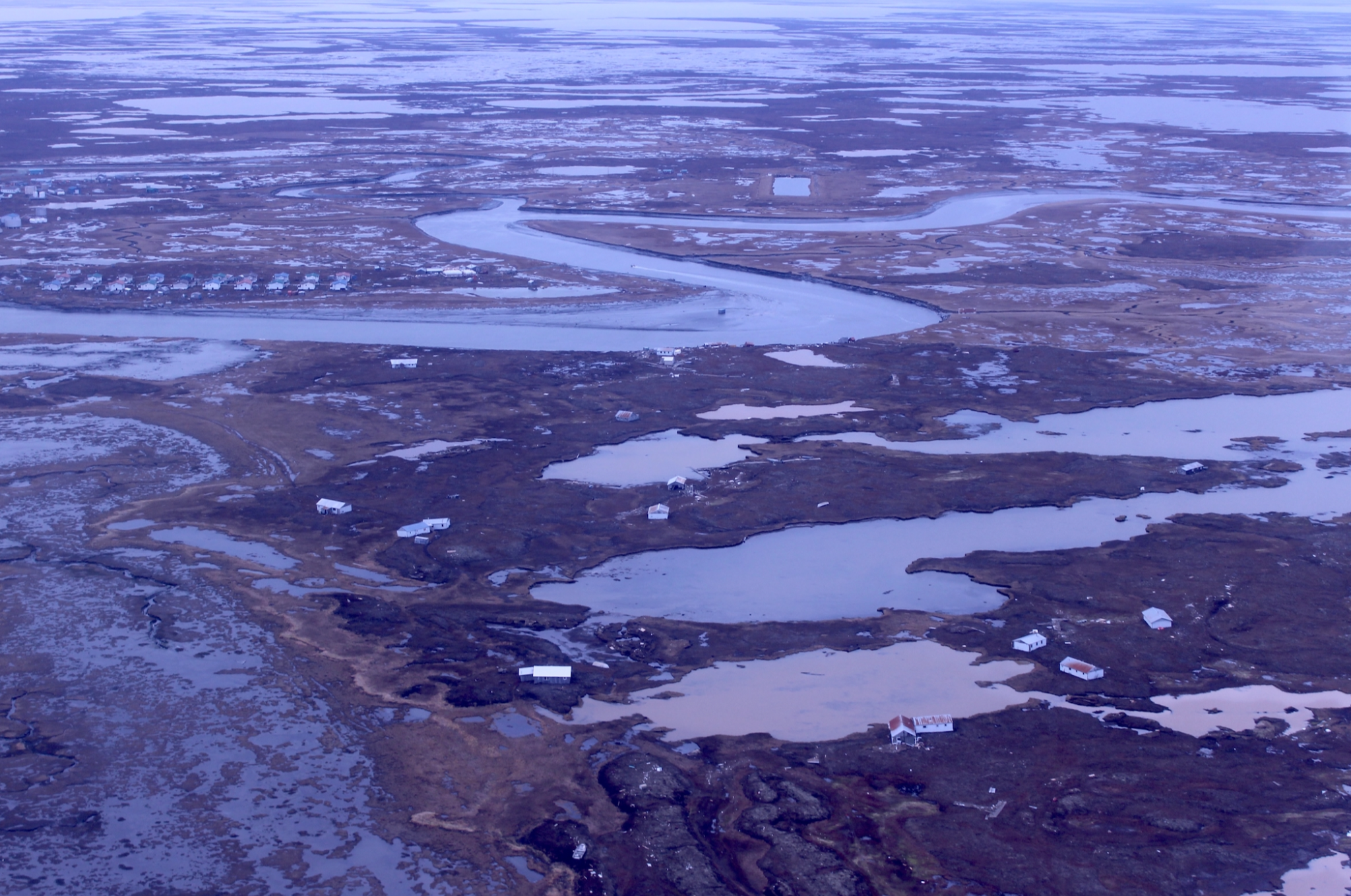
One Kwig resident, Dustin Evon, said he finally made it across the river to his house Thursday, after a harrowing evacuation on a four-wheeler across a torrent of floodwater over the weekend.
He found his glasses and wallet, but it appeared that water had risen thigh-deep inside during the storm. “Everything else is destroyed,” he said.
Forty-five miles west along the coast, in Kipnuk, Dunleavy estimated that 90% of structures have been destroyed. A total of at least 15 villages in the region were substantially damaged, according to the regional tribal health organization, Yukon-Kuskokwim Health Corp.
“Entire communities have been displaced, multigenerational families have had their homes washed away, destroyed or severely damaged, and over a thousand storm victims are sheltering in places not meant for long-term habitation,” Dan Winkelman, the corporation’s chief executive, said in a statement.
I don’t want to diminish the resilience I’ve witnessed this week from the people who have survived in this region for thousands of years — pulling together even as the storm threatens to break villages apart.
In Kwig, residents received donated shipments not just of store-bought goods but also of treasured subsistence foods like frozen moose; kids from a neighboring village, Kongiganak, sent in care packages. Search and rescue efforts for Kwig’s two missing people have continued long after the floodwaters receded.
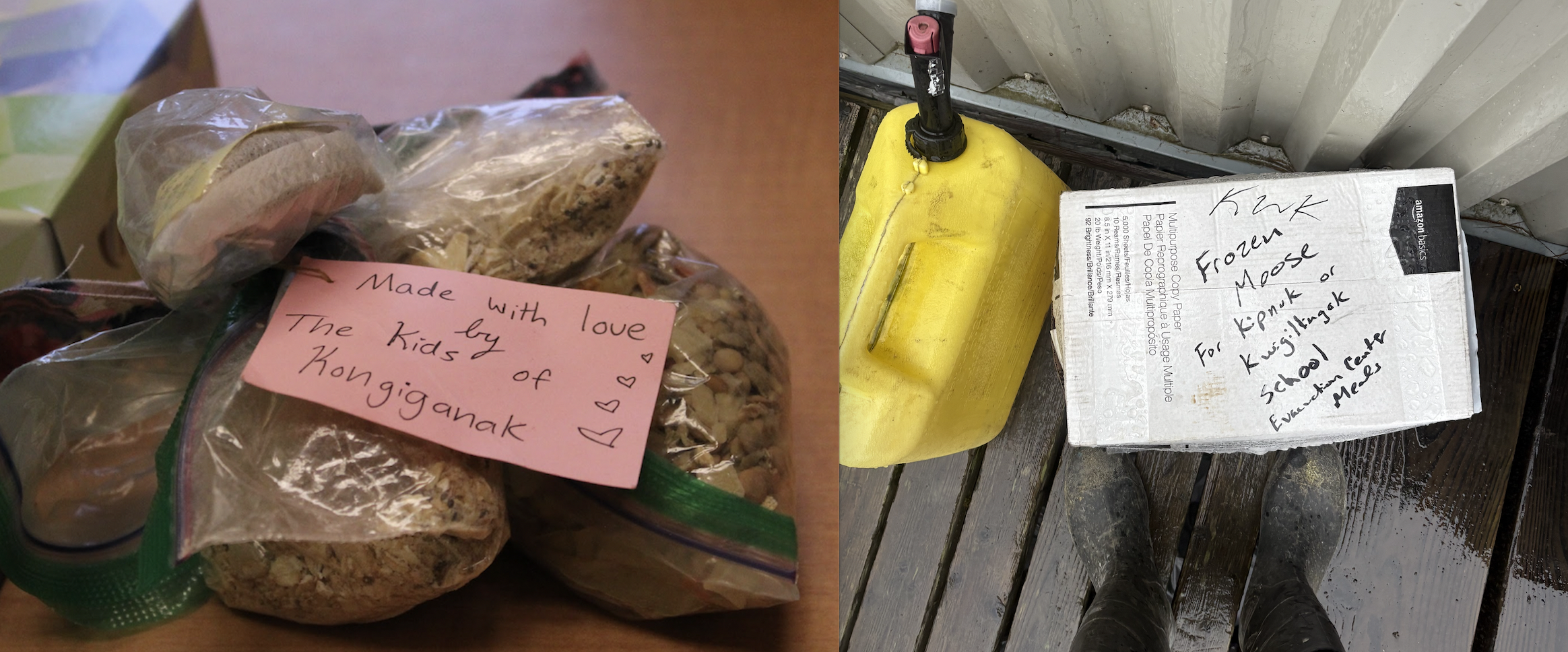
But nonetheless, the coming months will be a trial for the Yukon-Kuskokwim Delta’s residents — both for those who evacuated from their villages, and for those who stayed behind. Cash savings are scarce in the region; flood insurance is, generally, prohibitively expensive.
The questions I’m left with after nearly a week of watching the disaster and response unfold revolve around what will come next — not so much in the near term, but in the medium and long term.
How many displaced residents will want to return to their devastated villages? How much support can community leaders count on from state, federal and regional tribal governments to keep pipes from freezing during the winter, and infrastructure from being ruined? Will there be enough money to rebuild, to pay for projects that villages need to harden themselves against future storms, or to relocate, if that’s what community leaders choose to do?
The outlook feels grim: A federally sponsored effort to relocate just one Western Alaska village, Newtok, is expected to cost more than $150 million, while earlier this year, the Trump administration canceled a $20 million coastal erosion related grant for Kipnuk.
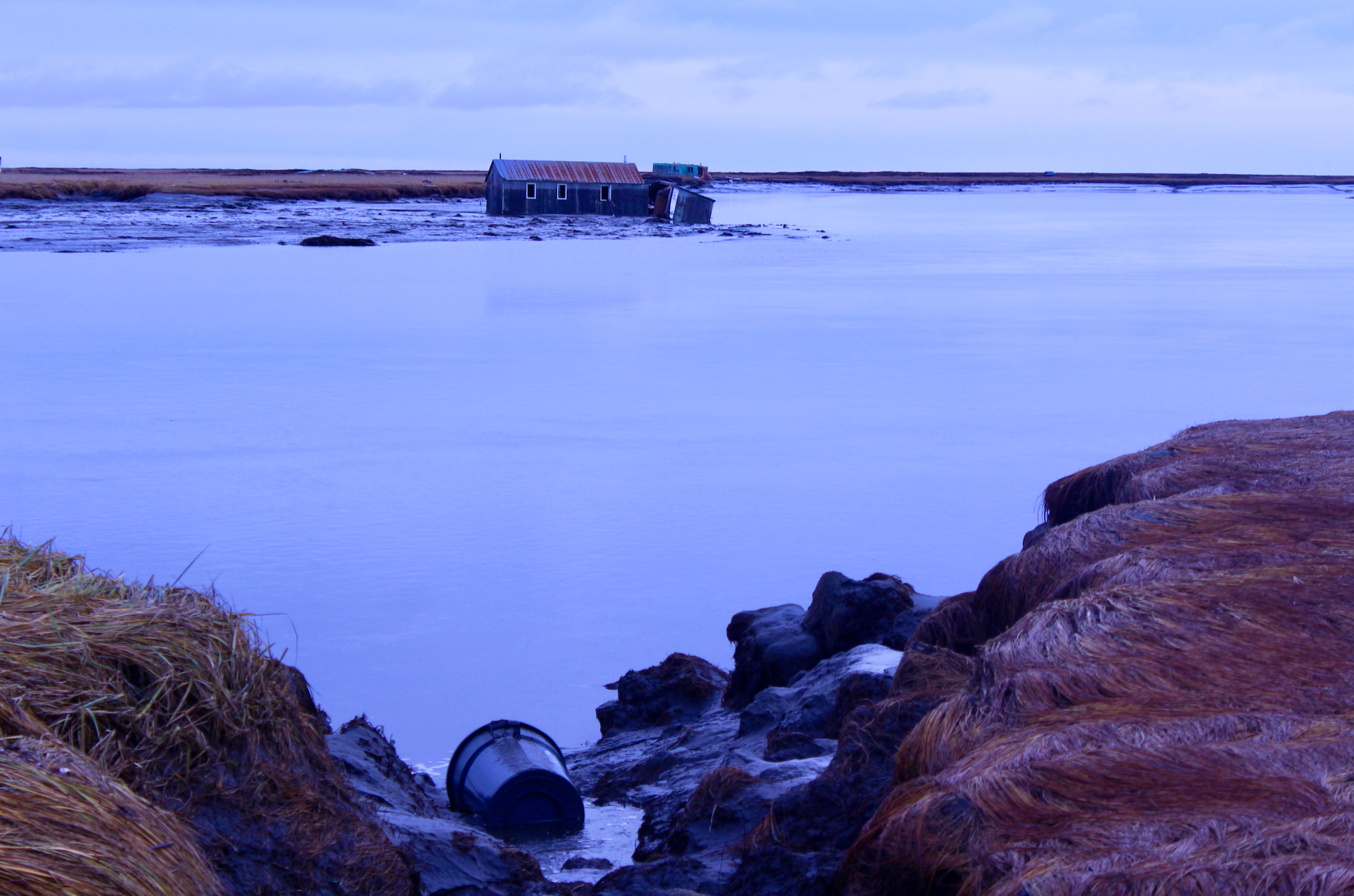
Edgmon, the House speaker, told me he’s been pondering some of the same questions. While the impact of the storm was regional, “the scope of this is very much statewide,” he said, citing Alaska’s tight budget.
The state, he argued, does not have enough money to pay large Permanent Fund dividend checks to residents while also meeting its obligations to match aid money from the Federal Emergency Management Agency — typically 25% of the total cost.
“You think about the enormity of the expense involved in all this and what it could do to Alaska’s fiscal future,” Edgmon said. “It’s going to be transformative in ways that we don’t know yet.”
“It’s too early to take action, of course,” he added. But, he said: “It’s not too early to start to think in these terms.”
One thing that’s clear is the threat from these types of fall storms is not going away, said Rick Thoman, a climatologist at the Alaska Center for Climate Assessment and Preparedness.
Warming oceans, he said, are providing more energy to storms. And while we don’t know exactly when the next typhoon will be, Thoman said, “we know there will be a next one.”
“And everything has to be done to prepare for the next one,” he said. The time to prepare, he added, "is not 36 hours before it hits.”
Correction: The original version of this story misstated Johnny Andrew's first name.

